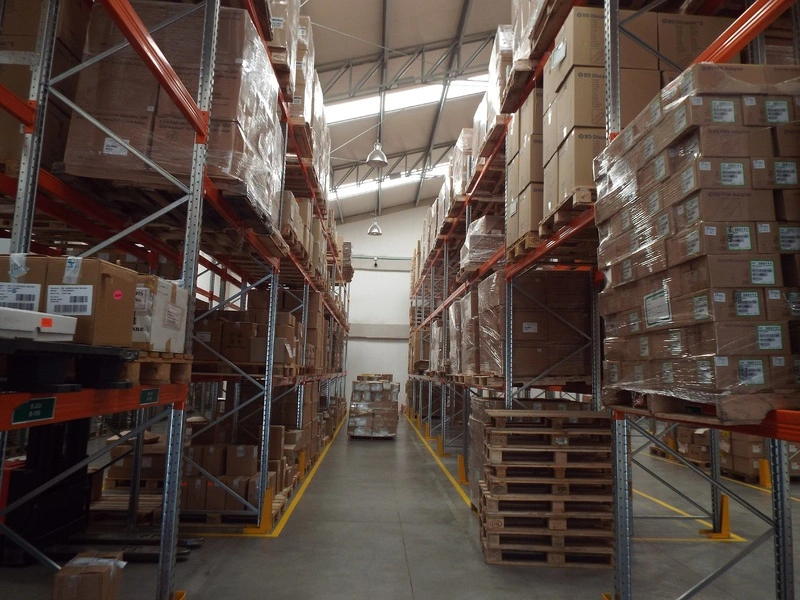Need help optimizing your inventory in the best possible way? Then, learn about some storage structures that can make a difference!
Inventory management is a critical activity for any business that deals with physical products. Therefore, maintaining a well-organized and optimized inventory can make the difference between an efficient flow of operations and a chaotic supply chain.
In this context, storage structures play a fundamental role. From pallet racks to bins, these structures are essential to maximize space, improve accessibility, and ensure the integrity of stored products. Learn more below!
Read also: The Ultimate Guide to Outsourced Warehousing for Business Growth
The importance of keeping inventory organized
Keeping inventory organized is vital to a company’s operational success. After all, a disorganized inventory can lead to a series of problems, such as difficulty in locating products, increased order processing time, losses due to expiration or deterioration of products, in addition to high operating costs.
Proper inventory organization allows for:
Better inventory control: facilitates counting and controlling items, reducing errors and discrepancies.
Reduced losses: Poorly stored products can be damaged or lost, resulting in losses. An organized warehouse minimizes this risk.
Agility in operations: A well-structured and organized layout allows operators to locate and move products more efficiently, speeding up order processing time.
Customer satisfaction: The organization contributes to fast and accurate delivery, which increases customer satisfaction and strengthens the company’s reputation.
3 main storage structures for your business
Choosing the right storage structures for your business is crucial to ensure that space is used efficiently and that products are stored safely and accessible. The most common structures are:
Pallet racks
Pallet racks are one of the most widely used storage structures in warehouses. They are ideal for storing large quantities of palletized products, as they allow easy access to products and can be configured at different heights, maximizing the use of vertical space. They are recommended for companies that handle large and varied volumes of stock, such as distributors and manufacturers.
Advantages of pallet racks:
- Facilitates direct access to each pallet, improving efficiency.
- Flexible configurations that can be adjusted as needed.
- Support for various types of goods.
Blocked
Blocked storage is mainly used for products that can be stacked on top of each other without damage. This structure does not require shelves, as the products are stored directly on the floor. Therefore, it is an economical and space-efficient solution, ideal for non-fragile and large-volume items.
Advantages of blocked storage:
- Maximization of storage space.
- Low implementation costs.
- Simplicity and ease of management for homogeneous items.
Bin
Bins are small compartments used to store smaller parts or high-turnover products. Therefore, they are ideal for storing items such as screws, electronic components, and other small accessories. Bins can be stacked or organized on shelves, facilitating separation and quick access to products.
Advantages of bins:
- A great solution for small products.
- Makes it easier to organize and separate small items.
- Can be combined with other storage structures to optimize space.
Inventory organization methods combined with storage structures
In addition to choosing the right storage structures, it is essential to implement effective inventory organization methods to ensure product turnover and integrity. The most common methods are FIFO, FEFO, and LIFO.
FIFO (First In, First Out)
The FIFO method is based on the logic that the first products to enter the inventory should be the first to leave. This method is important for perishable products or those with an expiration date. By using FIFO, companies ensure that older items are sold or used before newer ones, avoiding losses due to expiration.
Here you can use pallet trucks to make it easier to access older items and set up bins so that the oldest items are removed first.
FEFO (First Expired, First Out)
Similar to FIFO, FEFO prioritizes the removal of products with the closest expiration date. It is widely used in industries such as food, pharmaceuticals, and cosmetics, where the shelf life of products is crucial for quality and compliance.
In practice, it is possible to organize items according to their expiration date on the shelves of pallet trucks and keep the bins labeled with the expiration dates for quick identification.
LIFO (Last In, First Out)
The LIFO method is the opposite of FIFO, so now the last products to enter the inventory are the first to leave. Although less common, LIFO can be useful in situations where storage space is limited and products do not have an expiration date, such as in the construction materials industry.
To apply this method in practice, it is possible to use adjustable shelves on pallet racks to organize products so that the last ones are accessed first and to adapt the layout of the bins so that new items are placed at the front.
Count on 3PL Links!
3PL Links offers complete storage solutions for companies of all sizes and segments. With a modern infrastructure and cutting-edge technology, such as WMS (Warehouse Management System), 3PL Links guarantees efficiency in the organization and management of stocks, providing security, accessibility, and space optimization.
Whatever type of storage structure is required for your business, 3PL Links is ready to offer the best solutions. With years of experience in the market and a commitment to excellence, we are the ideal partner to ensure that your stock is always well organized and managed.
Find out more about 3PL Links’ storage solutions and optimize your stock right now!



